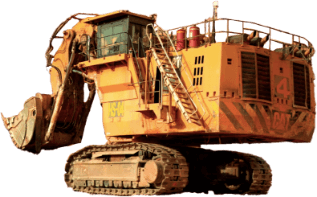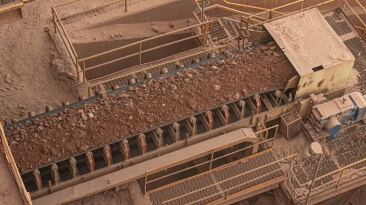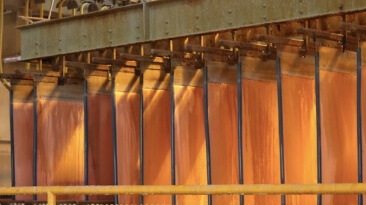Operations
Mining and Process
Conventional Open Pit Mine
The PV deposit is mined by conventional open-pit mining methods.
The pit is 4x2 km and operates 4 to 6 simultaneous faces; the Cerro Chato satellite pit is 1.5km west of the main pit.
Mining follows a traditional drill, blast, load, haul, and dump sequence.
Waste is hauled to dumps located north and northeast of the current pit configuration.
Mining Rate Life of Mine (LOM): ~200ktpd of material moved (~60 ktpd of ore) LoM average.
Mining
The PV mobile mining fleet includes:
26 Caterpillar 789 and
10 777 haul trucks
3 Caterpillar 994 and
one 992 front end loaders


2 Terex RH200 and one Caterpillar 6040 shovel
4 Sandvick D75KS conventional blast hole drills and 1 Powerrock D60 track drill
22 smaller loaders, bulldozers,
graders and water trucks
The mobile fleet maintenance facility is staffed by 130 highly experienced employees.
The facility can perform all major component overhauls except engines.
Process Streams
The ore is selectively mined and processed as a function of its grade, mineralization, acid consumption, leaching, and flotation characteristics:

Oxide and Supergene Crushed Ore
Medium-grade oxides and supergene leachable ores are hauled to a 50+ ktpd primary crusher that feeds screens and secondary crushers with a capacity of 45ktpd. Ore is transported to leach pads by conveyor stacking systems to minimize cost and compaction. Screened fines are drum agglomerated with fresh water and concentrated sulfuric acid by two Feeco agglomerators with a combined capacity of 24ktpd.

ROM and Crushed Chalcopyrite Ore
Leached at 40ºC to 65ºC to reduce passivation on engineered pads insulated against wind, with automated forced aeration and temperature control.

Ore for Tolling:
When the expected NSR from the sale of primary and to a lesser degree, secondary sulfide ores is greater than that might be achieved by leaching, chalcopyrite ore (typically with lower pyrite and higher acid consumption) and selected high-grade chalcocite ore is crushed by a dedicated system and sold to Kupari for floatation.